Story of Will Vinton and Laika Studios
Laika Studios has become renowned for its stop-motion animation within both film and animation circles, having been nominated and won numerous Academy, Golden Globe, and Annie Awards. Such a feat is especially pronounced given that Laika seems to be one of two animation studios that still exposes audiences to stop-motion animation on a relatively mainstream scale.
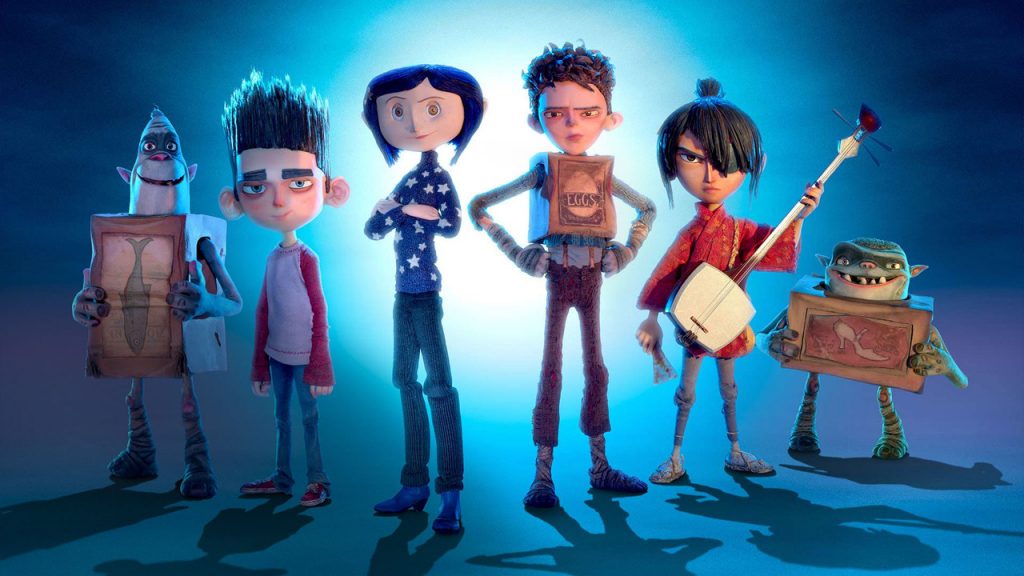
However, like many other stories behind the origins of capitalistic entities, the creation of Laika is not without arguably unethical methods.
There are few who are aware of Laika’s founder being animator and director Travis Knight, the son of Nike CEO Phil Knight. But there are even fewer who know how the studio’s creation was born from the destruction of another.
The Early Days of Vinton
Born in McMinnville, Oregon, on November 17, 1947, as the son of a car dealer and bookkeeper, Will Vinton was an Academy-Award winning filmmaker and animator who is considered the coiner of Claymation for his work of three-dimensional clay figures. Inspired by the counter-culture movement while attending the University of California at Berkely, Vinton had his father ship out the family’s 16mm camera and captured the local scene into a documentary called Gone For a Better Deal.
Inspired by Spanish architect Antoni Gaudi, Vinton delved into clay experimentation for creating structures. Combining his editing skills with the sculpting expertise of his housemate, clay animator Bob Gardiner, the two produced Vinton’s first animation film Culture Shock, which toyed with the concept of clay as a viable animation medium and earned them first prize at the Berkeley Film Festival.
After parting ways for a few years, After a period of separation in which Gardiner honed his sculpting and animation techniques while Vinton worked as a freelance director, sound technician, and cinematographer on short films and documentaries, the latter convinced Gardiner to move to Portland, live in Vinton’s basement and help him create Closed Mondays.
Being stop motion, one frame shot in Closed Mondays was required for each minuscule movement, and the 8-minute film used 11,520 single shots in total, each of which required a slight re-sculpting of the clay. The face of the man in the film was a life-size bust created from a plastic skull covered in plasticine, with its contours being gradually shifted by Vinton to change expressions frame by frame.
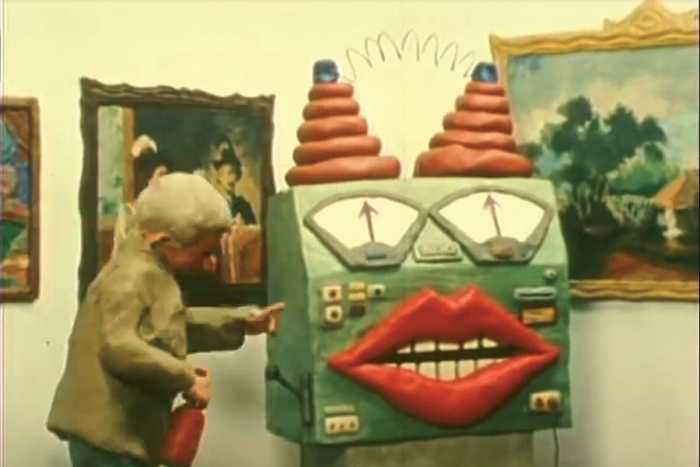
Though the characters’ emotions and expressions were arguably viewed as “grotesque”, the mistakes and mishaps throughout the 14 months, hundreds of hours of editing, and thousands of hours sculpting, were accepted as integral to the film’s unique process by the duo.
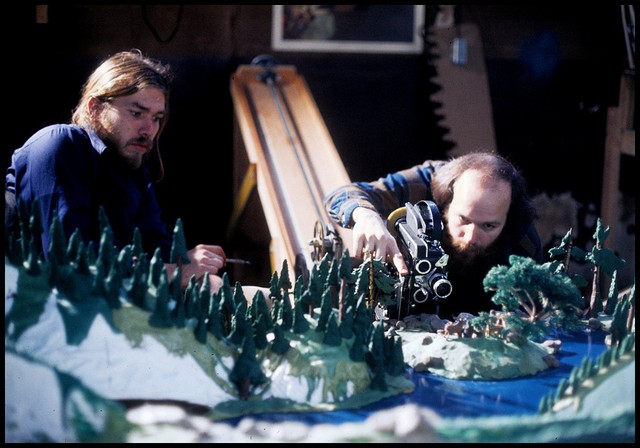
Though the film was initially rejected at a local Portland film festival, it was later screened before a feature by a friend of Vinton who owned a small theatre in the city, and the reception was glowing.
The film was submitted at small and large film festivals alike, earning the top prize at almost 100 international showings, including Cannes, and became the first stop motion film to win an Academy Award for Best Animated Short and claimed Portland’s first Oscar. Though Vinton went without financial payoff, he was lauded with credibility in the film sphere.
A quote from Vinton states that he’d accomplished his goal to “prove that clay animation was still viable. Back then, 99% of animation was for children and families, or two-dimensional; this was neither — it was for adults, it wasn’t a kiddie film. So many people told us it wasn’t going to happen, just forget it. We validated the medium, and it opened doors.”
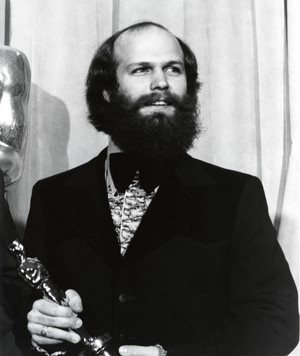
Vinton Revitalizes Claymation
The aftermath was overwhelming. By 1974, large advertising brands and film agencies sought Vinton as a way to distinguish themselves from their commercials. His first project was a Rainier Beer commercial; and while Vinton’s commercial success would be criticized by some as “selling out”, Will learned that commercial work’s financial benefits still enabled him to express his creativity.
The Rainier commercial was followed by 1976’s Mountain Music, which won first prize at the Hemisfilm International Film Festival and convinced Vinton to hire six employees, most of whom were architecture colleagues and artists, while he continued to revitalize clay animation.
Under the tutelage of animator Barry Bruce, Vinton mastered the refinement of his characters as Vinton Studios went on to produce a trilogy of 27-minute fairy tales: Martin the Cobbler (1977), Rip Van Winkle (1978), and The Little Prince (1979). In a 1978 behind the scenes feature that documented the clay animation process, Will Vinton coined and trademarked the word “Claymation”, using it to differentiate from the inevitable imitators that had begun to appear.

Though the studio earned just $5000 in its first five years, its struggling financial sustainability changed in 1985 when the studio produced Disney’s Return to Oz and Vinton completed his first full-length Claymation film “The Adventures of Mark Twain”.
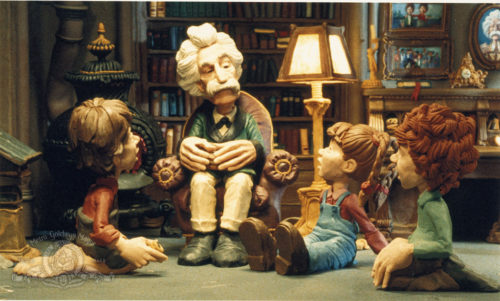
Though the latter did poorly in theatres, Vinton had been nominated for four Academy Awards and won three Emmys by the end of the 80s, skyrocketing his career from animating a sequence for Michael Jackson’s Moonwalker film to claymating Bruce Willis into a frog.
His most famous work came about when an advertising agency hired Vinton to animate raisins dancing to Marvin Gaye’s Motown hit “I Heard It Through the Grapevine”. Vinton and his artists designed over 25 clay raisins, each of which with a distinct design, and spent months animating the commercial before its release in 1986.
The commercial’s viral success led to Raisin Brain adopting the raisins as its mascot, collectible figurines, and CBS hiring Vinton Studios to create a series of commercials that each required five weeks of work.
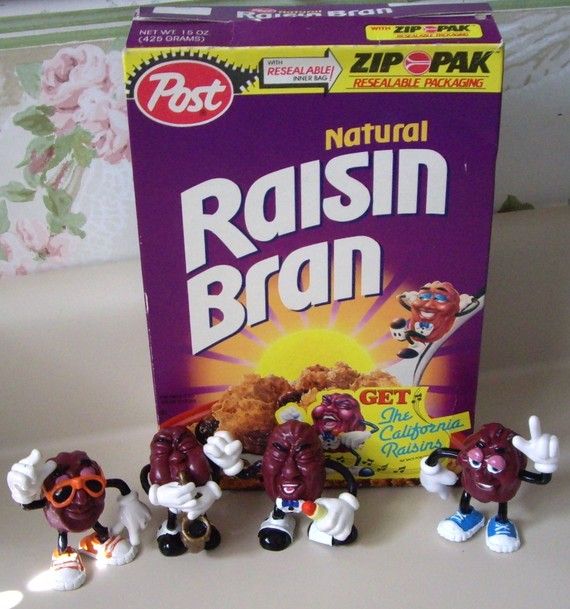
A 30-second commercial containing 24 frames per second meant 720 individual scenes were required to be carefully set up by hand. One of the projects was a musical short Meet the Raisins, which aired on prime time TV, gathered almost 100,000 VHS pre-release orders, and brought in $3 million in revenue per year for the studio, which grew to 50-60 people.
Vinton edged out from the animation process and more into the business world as he supervised a team of animators, realizing that the studio had to think bigger to appease agencies wanting to stand out from the raisins that had become synonymous with Claymation.
However, Vinton found himself in a difficult time when he laid off some staff to better integrate a CGI division and balance the creative demands of the remaining artists with the technicalities of the new process. Vinton is quoted by stating “CGI requires an animator to be a technician more than an artist. But I found that my old stop-motion animators were best at adapting to it. CGI works in 3d space, and they already had the knowledge of the process in their bag of tricks.”
Vinton combined older stop motion techniques with CGI to create unique visuals for a Chips Ahoy! commercial that later had the studio partner with M&Ms/Mars to create Vinton’s most recognizable characters, the “Red and Yellow M&Ms.”
Enter: The Knights
The studio went on to animate Eddie Murphy’s primetime TV series The PJs, using a medium Vinton pioneered called “Foamation”, in which ball-and-socket armatures were coated with foam latex. This allowed greater sturdiness and lightness for the characters.
By the late 90s, Vinton’s studio had reached $28 million in revenue, was entering a digital market, and saw its team grow from 100 to 400 due to significant stress from larger projects. Converting the studio into a business, Vinton hired Hollywood executive Tom Turpin as the company’s first professional CEO who brought in outside investors with a target of $5 million.
The studio shared a legal counsel with Nike, Brian Booth, who recommended multi-billionaire Nike co-founder Phil Knight. Knight funded $5 million with a 15% stake in the company and with an additional $2 million from venture capitalists, Vinton Studios had $7 million in the bank.
During all this, rapper Chilly Tee was struggling to generate a viable following or interest from record companies, despite his own recording studio and working with one of the best rap production crews in the industry, The Bomb Squad, all funded by his father, Phil Knight himself.
Despite Phil Knight signing a deal with the MCA and using his connections in the entertainment industry to help his son produce his first and only album, Get Off Mine, the only return in investment was a form of product placement from the “Just Do It” song.
The only outcome Chilly Tee saw of his rapping career was a spot on Complex’s 120 Worst Rapper Names of All Time list, and he ended up graduating from Portland State University at 25 with no job experience and few prospects.
Phil Knight requested his son to be hired in Vinton Studios, and with no animation knowledge, Travis Knight started out rendering whiskers on The PJs’ Thurgood Stubbs in the CGI department. No one at Vinton Studios knew he was the son of a man now worth $16.3 billion today who’d just purchased 15% of the company, and what was to come in the next three years.
The Decline of Vinton Studios
The “PJs’” costs outweighed its poor ratings and after three seasons the show was canceled in 2001. Vinton Studios’ other show, “Gary and Mike”, was canned after a single season, and to make matters worse, the studio’s commercial division was hurt when the 9/11 terrorist attacks resulted in an industry-wide drop in advertising.
Management’s questionable choices further strained the company and placed it in a period of financial instability. Vinton recalled a loss of control as he watched LA type agents and executives pouring money into things that didn’t warrant value, and he searched for a way out.
Turpin was replaced by ex-Disney executive Jeff Farnath, whose accustomed experience with financial security and large budgets led to a culture shock.
One animator who joined the studio in the late 1980s named Max left on a sabbatical in late 2000, and upon his return recalled the contrast from the open culture of shared secrets and exchanging of ideas, was quoted: “When I came back, the change was remarkable: the atmosphere was stern, corporate — it was an entirely different company with an entirely different attitude.”
Massive layoffs reduced staff from 400 to less than 100, and though Max was offered a severance package, others weren’t as lucky.
Desperate to save the mismanaged studio that had lost over $7 million in funding, Farnath requested Phil Knight for more money, and adamant on owning the “hemorrhaging company”, Knight took control of the board, appointed Nike veterans to positions, and promoted Travis to the board of directors.

Even with only a few years of production experience, Travis Knight had displayed exceptional work, but he wasn’t qualified to operate a company.
Half a year later with “mounting pressure” from Phil Knight, Will Vinton was fired from his position, going from $20 million worth in stock down to a $125,000 severance package in front of him. Vinton attempted to sue Phil Knight on the grounds that he’d been unfairly dismissed and accusing him of corporate nepotism, of which Phil Knight himself admitted, but the case was dismissed.
The Rise of Laika Studios
The Knights acquired ownership of Vinton’s life-long work, the M&Ms, California Raisins, and legal trademark rights to the term “Claymation”, and poured $180 million into the new firm rebranded as Laika.
In addition to the animation veterans from Pixar, DreamWorks, and Disney, the Nike executives Knight lured in had no experience in film, with one of them, Dave Wahl, having told Phil that he “wouldn’t know Finding Nemo if it hit [him] in the face”.
On Travis’s good word, Phil Knight enlisted Henry Selick to direct Laika’s first feature-length film, Coraline, which debuted in 2009 and grossed over $124.6 million on a $60 million budget. ParaNorman followed in 2012, which grossed $107.2 million on the same budget, and saw an Academy Award nomination along with Coraline.
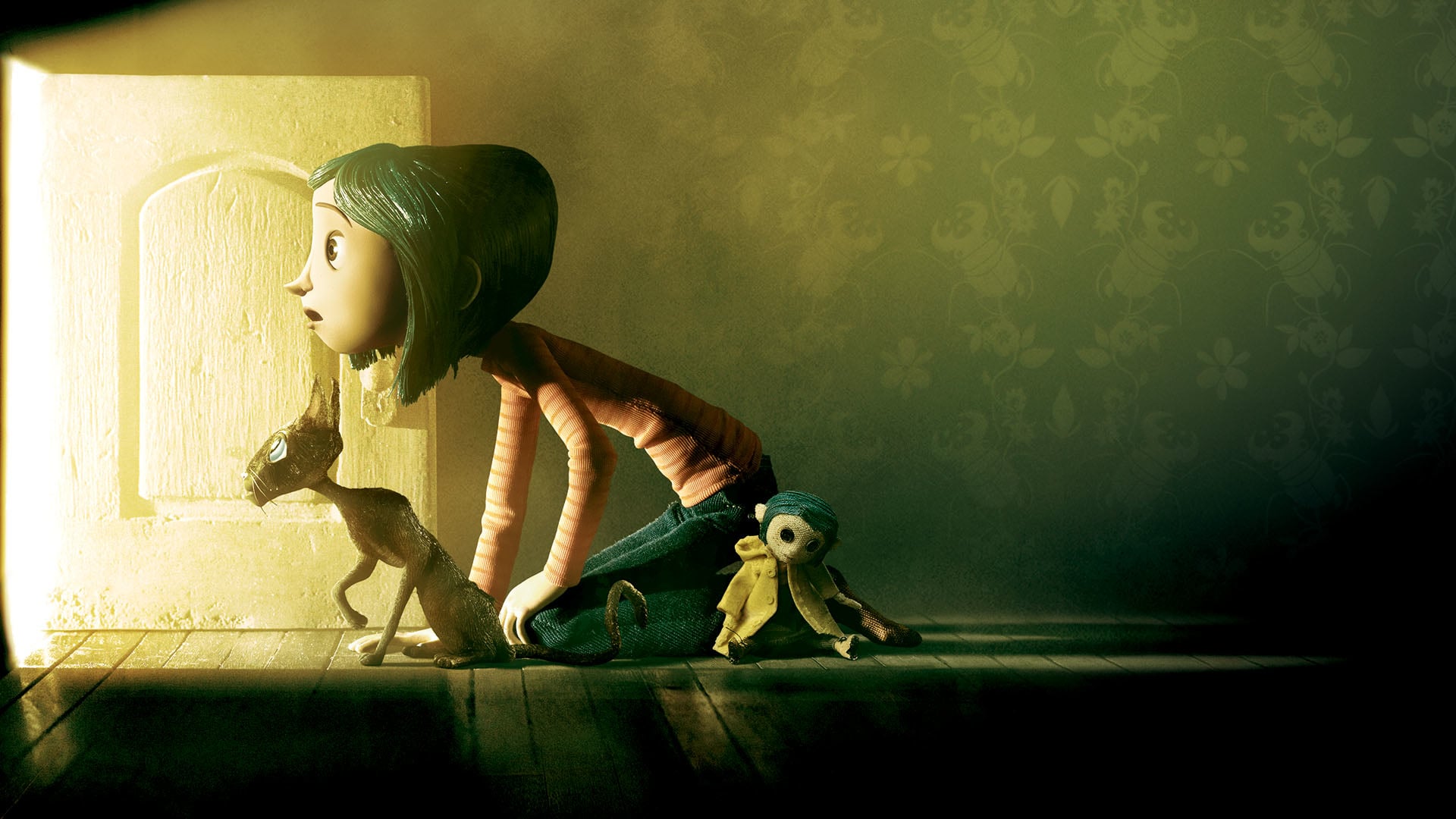
Still, the studio saw similar problems with severely downsizing its staff to focus on stop motion. After his firing, Max became a freelancer, and despite his excitement in working with Henry Selick on Coraline, found animators treated poorly by management.
Travis Knight was asked by film critic Bill Desowitz about his new status after being promoted to CEO and President of Laika in 2009.
Travis responded with: “It’s an interesting transition, as I’ve gone over the different permutations and roles in the studio over the years. At first it was very unusual for me to be in this role… But I think when you get to the bottom of what it is we actually do I think it makes perfect sense to have an artist at the head of the company. And who better than me, Bill? Don’t answer that.”
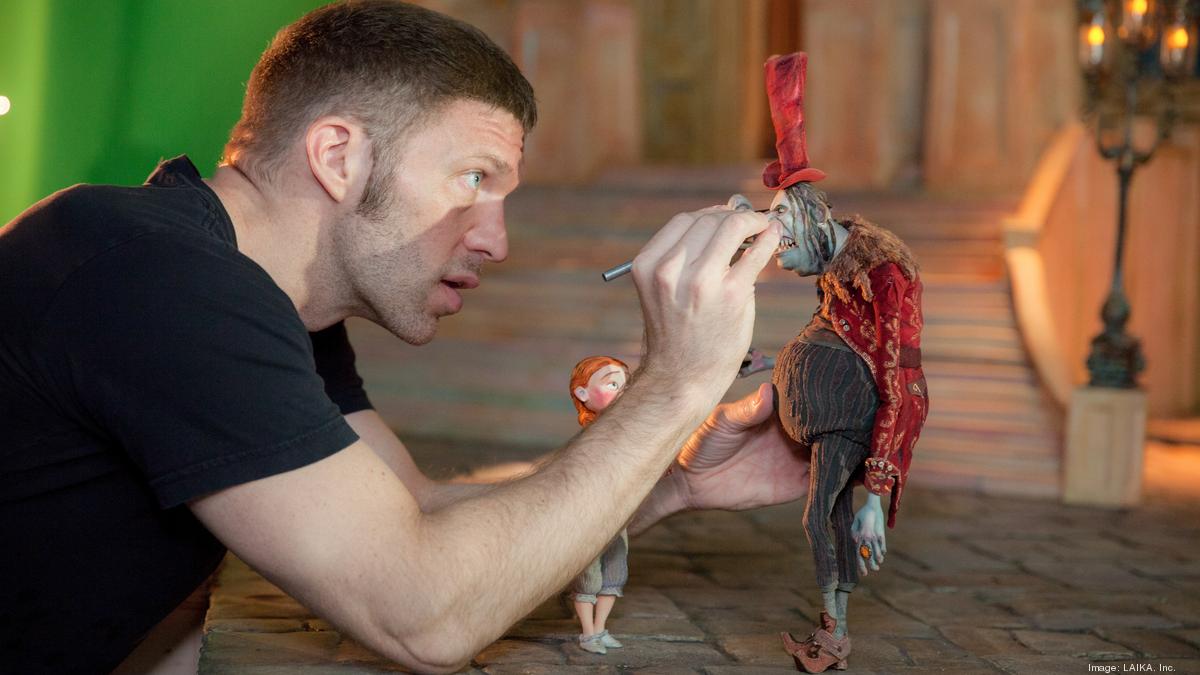
Vinton went through financial and psychological tribulations after his unfair ousting, as the modest fortune he’d created for his family over 30 years had been steeped in company stock. He sold his Oak Grove home of 8 years, took his two sons out from private school, scaled back on the lifestyle he’d grown used to, and in 2005, learned that Bob Gardiner, with whom Vinton had sparked his career and won an Oscar, committed suicide.

Before his death, Vinton had tried to return to his passion for animation; he tried Kickstarter to fund a Broadway musical called “The Kiss”, but raised just 20% of his $80,000 goal. He taught animation classes at the Portland Institute of Art and operated a boutique animated movie and licensing studio called Freewill.
Will Vinton passed away on October 4th, 2018 after battling multiple myeloma for 12 years. He’s survived by his wife, daughter, and two sons.

Conclusion
I didn’t write this to attack the hardworking animators or any other workers employed in Laika. This isn’t meant to be a slander against them or discourage people from watching their films.
But I do think it’s important to acknowledge the darker history behind Laika’s creation, and highlight the nuance in which its creation involved taking away from a man whose hard work revolutionized Claymation and provided opportunities to so many artists. I’ve seen and read so many YouTube videos and articles that cover the history of Laika Studios and yet rarely did any of them touch upon the arguably questionable means from which Laika emerged in the first place.
Vinton’s legacy includes establishing Portland as a creative haven for animators and a studio that created numerous iconic Claymation characters that became a part of many people’s childhoods. While the praise from audiences and critics of Laika’s films aren’t unwarranted, there’s a severe lack of awareness of the corporate nepotism that enabled the mismanagement and death of an animation studio that breathed life into a medium as niche as Claymation.
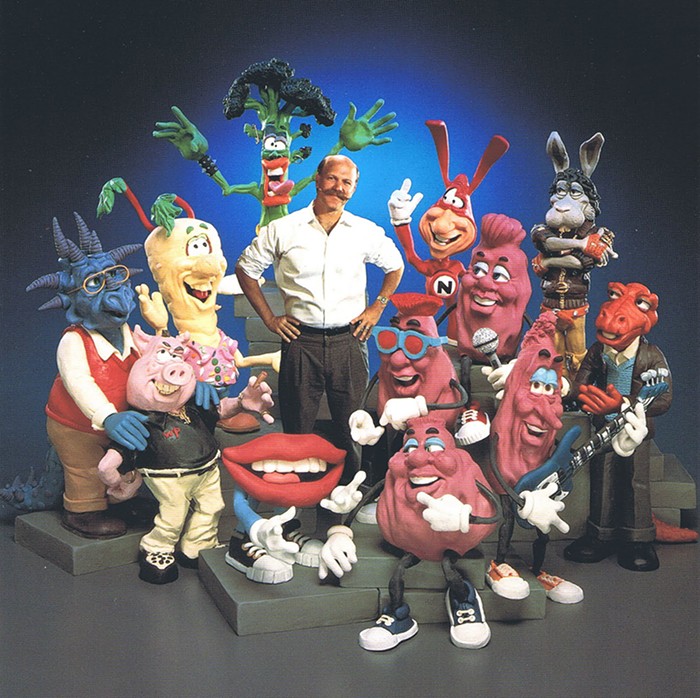
Laika would not exist today if it weren’t for Will Vinton, and while his story demonstrates the dangers of nepotism and capitalism, it’s also an inspiration for following one’s passion and pushing the boundaries of an artform long dismissed by most but still beloved by many today.
What do you think? Leave a comment.











I went to the Laika exhibit in Portland a year or so ago, maybe more. It was the most extraordinary art exhibit I’ve ever seen in my life. Seeing Coraline’s garden in person… and the skeleton from Kubo is something I’ll never quite be able to describe in words!
I love them. Every frame is an art.
From a recent experience, I suggest not watching Coraline and Kubo back to back as the brilliant former reveals the latter to be distinctly average.
I’m afraid that a “Japanese” film made by Americans is a better definition of the word. During 30 years of reviewing theatre and film I worked hard, as most critics do, at understanding the cultural nuances of films from other countries. My problem with Kubo is that it failed to do the same.
Yes, I don’t jump to say media is culturally appropriative (because I do think a lot of this stuff is pretty fair game for anyone to use, and Japanese media certainly has no issue about using settings and characters for Western cultures and anime and games in particular take bits and pieces from all over the place and mix and match them), but it kind of did feel that way. I spotted a Japanese name among the contributors, none among the main voice cast, and as you say, the story just didn’t feel Japanese. It’s especially apparent having watched Kaguya and seeing its take on similar themes. The child-centric family in Kubo seemed more Western, as did the handling of the idea of death, memory, and transience – Kaguya’s conclusion is I think meant to be distressing (it certainly made me cry), and it surprised me a little because I’m more used to Japanese media that shows greater acceptance (that is culturally quite hard to understand but is something that draws me to it), but it doesn’t hedge around the idea of transience or Buddhist ideas – if it’s ambivalent about them, it still feels so in a more Japanese, not Western way as in Kubo. I was also unsure about the sequence with Kubo summoning origami birds and scaring the real bird (and disliked because I think it sends a bad message, I hate seeing parents allow their children to frighten birds). The story also simply doesn’t flow very well.
It’s a Western film that simply happens to be set in a fictionalised Japan, that does have striking visuals going for it, but not an American Ghibli.
Kuba a disappointingly shallow appropriation.
To be honest, I found the story arc wanting and the ending almost appeared to suggest they’d lost interest in the project.
I showed it to several classes of children, along with Coraline; watching the difference in reaction was very revealing.
These are the movies I fell in love with. I saw Coraline when I was 6, and it never scared me one bit. ParaNorman and the Boxtrolls made me laugh, and Kubo was just beautifully made. I still haven’t seen Missing Link yet, but I can tell it will be as good as the other movies.
I’ve admittedly never watched any stop-motion films, but I’ve always been in awe of the perseverance it must take to make!
A really fascinating read.
Vinton animated the California Raisins? Who knew??? Not to mention the M&Ms, whose commercials are some of the only ones I can honestly say I enjoy watching. Ms. Brown is my favorite.
An interesting look at American stop motion animation (recent) history and its dark side. Thanks for the fascinating read.
Kubo is truly bewitching. And that’s not just one cinephile parent speaking, my children agree with me.
Watched it at the weekend with my youngest (10). She loved it – as did I . It’s stunningly beautiful and amazing that it’s stop motion.
Thank God for Laika & Aardman studios, keeping the beautiful and tactile art of stop motion alive.
Growing up watching films like Wallace and Gromit, Coraline, etc., I have a huge place in my heart for stop-motion animation. The work, talent, and imagination that you guys put into crafts like this, it just amazes me. It’s really inspiring. I’ve always wanted to create something like this, and hopefully one day I have the chance to.
I feel like Laika’s movies would be much more successful if they worked with Netflix instead. Because Netflix is really going to push boundaries for animated movies in the near future.
Laika gave birth to one of the most terrifying memories of my childhoon in coraline. Now that i dont scream when i see a doll with button and eyes and arent afraid of tiny doors ive learn to appreciate and art creativity and labour that went into creating that film.
Their movies might not be perfect….. but Laika is truly one best animation studios in the world, simply because of their passion and their dedication to their work; even if their movies don’t make a significant amount of money, they keep and keep and keep and keep and keep and KEEP moving forward with new projects; despite the fact that is so hard and frustrating to work in stop-motion (and animation in general) they never turn back. for this and so much more, they have my most sincere respects .
Will Vinton’s story clearly highlights that anything worth having demands plenty of effective, sustained and directed efforts. It was a really interesting read. Thank you for the article. I did enjoy some claymation films that I watched but reading this has helped me develop a newfound respect for all the hard work that is put in behind the screens.
Kubo was good but the story dragged and kids lost interest. I’d say Boxtrolls and Coraline were much better.
Even if The Boxtrolls and Missing Link weren’t up to par like the other films in their roster, you cannot deny the time and effort it took to bring their Worlds to life…
Laika really made my childhood I fell in love with stop motion animation and the character model I remember making my mom watch all the films and buy them just to re-watch all the films but mostly Caroline I would still watch it to this day I will always hear kids talk about how they would watch disney as a kid and I was the only one who would watch Caroline and everyone would tell me how scary it was I would go home after school just to put in Caroline and watch the gorgeous animation and see the breathtaking background then I would make little theories about it then paranorman came out an I didn’t like zombies I was terrified but I gave the movie a try since you made it and after watching it I loved zombies more than ever and sometimes I will act like I was in the movie then more movies came out and I watched all of them and I proudly would tell people that I didn’t like disney but Laika was way better than disney sure they do traditional Frame by Frame animation but I loved stop motion more and now since I’m a freshman in high school I’m proud to know they still feel strong about stop motion and don’t do live action.
I almost wish that every mainstream animated movies nowadays was in stop-motion instead of CGI. Because, let’s be honest – making something in CGI seems to be largely arbitrary. You could easily make a movie like The Addams Family 2019, Uglydolls, 9 or Toy Story in stop-motion without changing anything.
I’m hoping to become a director in the future, study filmmaking and start making my own personal movies… If I manage my unlikely dream to become successful, I swear, I will try to work with these people… Tim Burton movies at first, and, later on, the Laika masterpiece that is Coraline, are the movies that made me fall in love with the art of film, the first movies I began to watch the behind the scenes of when I was just a little kid, picturing myself as either Tim Burton or Henry Selick… I’m glad and thankful to Laika for keeping stop-motion alive, the animation style I grew up with, that is now part of my very soul.
I’m just glad there’s still a major production studio making stop-motion films!
Kubo was stunning, disturbing and haunting (my children are still talking about it years later while they never talk about Disney films after watching them).
Boxtrolls has still got to be one of my most favorite animated films. Laila films feel like real fairy tales—it has a touch of darkness to it amidst all the whimsy and fun, which makes it all the more thrilling and appealing to both kids and adults.
Laika’s movies have something that other animated movie doesn’t have, I don’t know how to explain it.
Sad for the enormous talent at Laika.
This studio deserves more audience and recognition. The hardwork that these people are putting in to get each frame perfect is unbelievable.
Laika is when a group of geniuses, creative, and remarkable artists gathered and have too much fun.
I LOVE THEM!!!!
Okay, so I don’t know what to say or think other than this: Will Vinton, in my humble opinion, is a true Hollywood legend. Not only is he deserving of that title, he’s much more of a hero than Phil Knight or Mr. Knight’s son… what’s his name….oh yeah! Chilly Tee are. Wow! really? Chilly Tee? Chilly,only wishes his name was perhaps Vanilla Ice or anything besides Chilly Tee. But even Robert Matthew Van Winkle, had a huge hit rap song. Something Mr. Chilly never had. I find it interesting that America is the land of “The Sell Out” and at first we all think “Yay! Good on him” or “her” because they got PAAAYYED!!!! But as we all realize that “they” might have, more or less, gotten “Paid, Played and Sprayed” to quote Lawrence (don’t call me Larry) Fishburn in “King of New York”. Most really are sellout’s and we understand that that’s okay as long as you don’t mind not being taken seriously ever again. Hey, but you’re rich now.. right? Where’s this all going? I’ll tell you where….Phil Knight is the undisputed KING of facilitating those giant sellout paydays. But we expect that from athletes, don’t we? Athletes are not artists, at least not in the true sense of the word. Some may disagree with that assessment because Michael Jordan was inarguably an artist and so was The Artist Formally Known As Prince. It even states that in his “name” which at one point was just a symbol. But you have to realize that Phil Knight is not an artist. He’s an insanely successful business man who was able to spot talent and reward them with completely insane contracts worth tens and hundreds of millions of dollars. And so, when Will Vinton got Phil Knight to bail, his little yet already successful empire of Claymation, out of financial trouble he was not PAAAAYED but he sure was PLAYED AND SPRAYED … and Phil Knight sucker punched him right where it hurt the most. I’m actually more familiar with Will Vinton’s work than Chilly Tee’s.. oh wait, I mean Travis Knight’s work. It may just be my age showiing here but whatever,….What my take away here is this: People with unlimited amounts of cash can basically do whatever they want to and that’s exactly what Phil and Chilly did. They just said “F_ _ _ k Y_ u !!!” to Will Vinton, who clearly had his life’s work stolen from him by the owner of Nike and his wannabe rapper son. I’m not saying that the new studio Laika isn’t legit or undeserving of their success. Quite the opposite, but they only served up what was already made possible by someone else who didn’t even get to enjoy a financial windfall like so many less deserving non artist’s on Mr. Knight’s roster of Nike, endorsed poster boys from the ranks of professional sports. Money begats more money and time and time again the real artist’s get to watch from the sidelines (pun intended) as some rich person takes the the business, the money and the credit from one’s more deserving. Sometimes, if you wanna be rich and retired, you gotta play the game, play the hand your dealt with the goal of walking away from the table winner and not a Schwimmer…doh!
Great article! I learned so much.